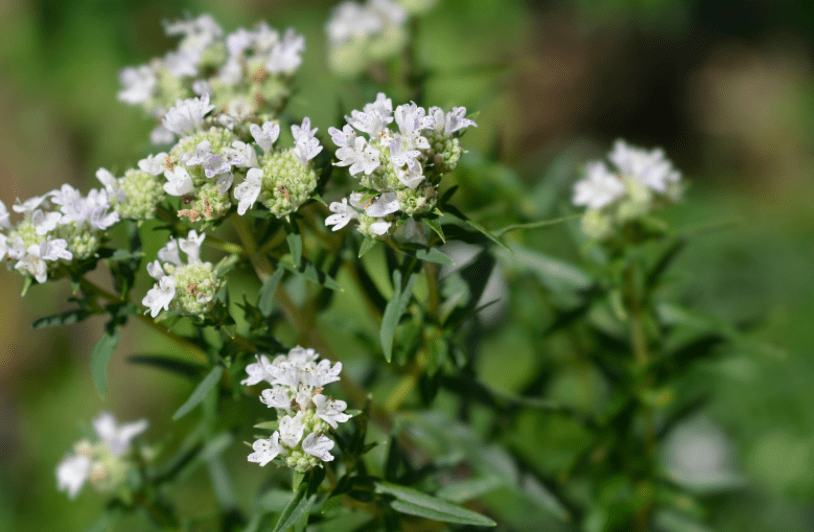Mountain Mint
Mountain mints are not confused with actual mints; they belong to a distinct family. However, they have a comparable growing pattern, look, and aroma and can be used in the same way as true mints.
Mountain Mint Information
Mountain mint is a low-maintenance plant that proliferates, so be careful where you plant it. Mountain mint is a collection of roughly 20 plants in the Pycnanthemum genus native to the southeastern United States.
They’re a perennial that blooms from July through September. Mountain mint grows in bunches that can reach a height of two to three feet (0.6 to one meter). It has dark green leaves with an intense minty aroma that grows profusely.
The plants produce a profusion of lovely white or pink tubular flowers. Mountain mint has many of the same functions as natural mint, including preparing tea and employing sweet and savory foods. Mountain mint looks great in native beds, meadows, and other naturalized places as a garden element.
In the Garden
Mountain mint is easy to grow in your yard after starting it, which isn’t difficult if you have the right conditions. Mountain mint, like actual mint, can thrive in a variety of environments and will swiftly outcompete and outgrow other plants if given a chance.
Choose your location carefully since this plant has the potential to take over beds and become a difficult weed to control.
Mountain mint thrives in zones 4 through 8. It enjoys direct sunlight but may take moderate shade. It has low water requirements and can withstand droughts.
Mountain mint can be started from seed and planted outside once the last frost has gone, or transplants can be used. Allow your mountain mints to establish themselves before watering them.
They should thrive if you leave them alone. Plant mountain mint where you want them to roam freely, or trim out some of the roots in the spring to keep them more restricted.
Containers are also a viable solution. Clustered mountain mint and hoary mountain mint are commonly cultivated species (Pycnanthemum incanum). Both species have serrated ovate leaves with white flower clusters at the nodes. The leaves have a spearmint-like fragrance when crushed.
Mountain mints are deer-resistant, but curious deer will occasionally nibble on the growing foliage.
Mountain Mint Species In U.S
Clustered mountain mint and hoary mountain mint are commonly cultivated species (Pycnanthemum incanum). Both species have serrated ovate leaves with white flower clusters at the nodes. The leaves have a spearmint-like fragrance when crushed.
Mountain mints are deer-resistant, but curious deer will occasionally nibble on the growing foliage. Mountain mint clusters thrive in full sun, but they can also thrive in partial shade. It favors moist, well-drained soil, but it may survive in clay as well.
In August and September, it develops dense flower-like cymes that bloom for weeks.
Clustered mountain mint spreads via rhizomes and seeds, just as other mints. If it becomes too aggressive, it may easily be pulled up if it gets too invasive.
Unlike its cousin, hoary mountain mint prefers sunny, acidic soils that are pretty dry. It may grow in partial shade and clay, rocky, or sandy soil. It’s even drought resistant.
Hoary mountain mint leaves are powdered white and covered in fine hairs. Blooms from July through September.























